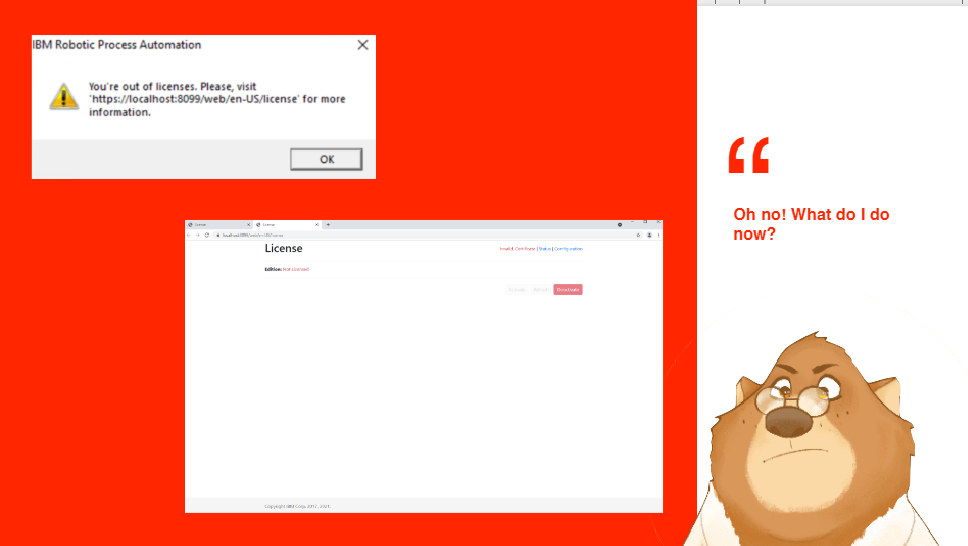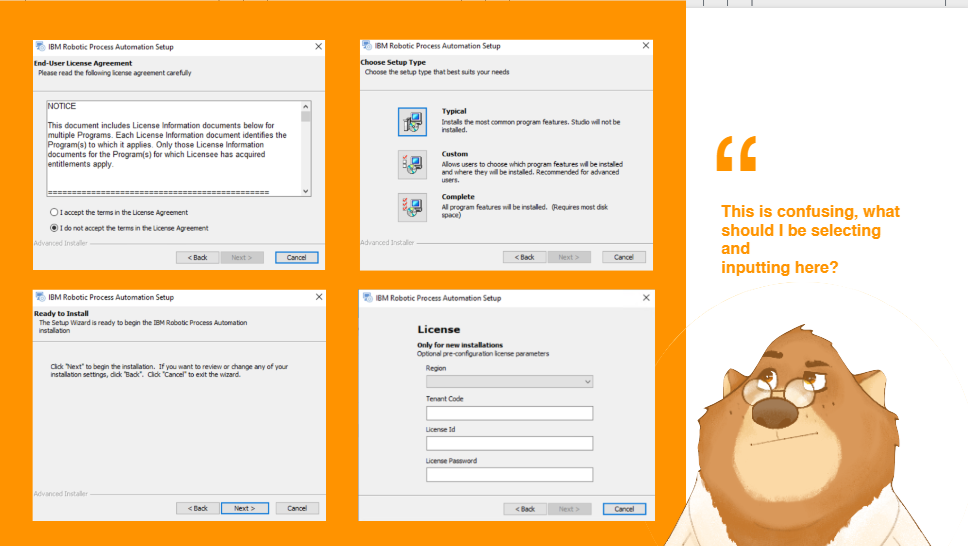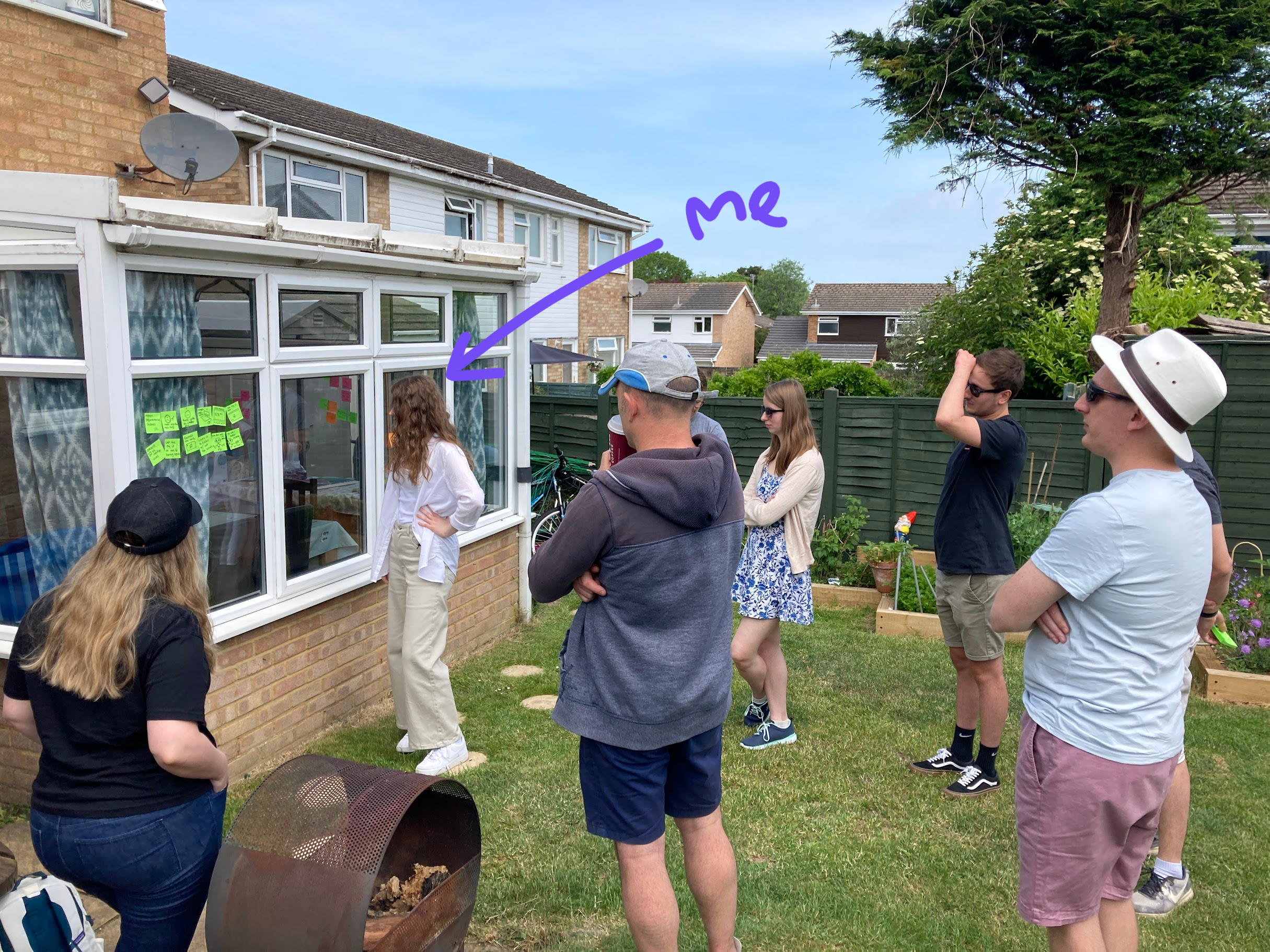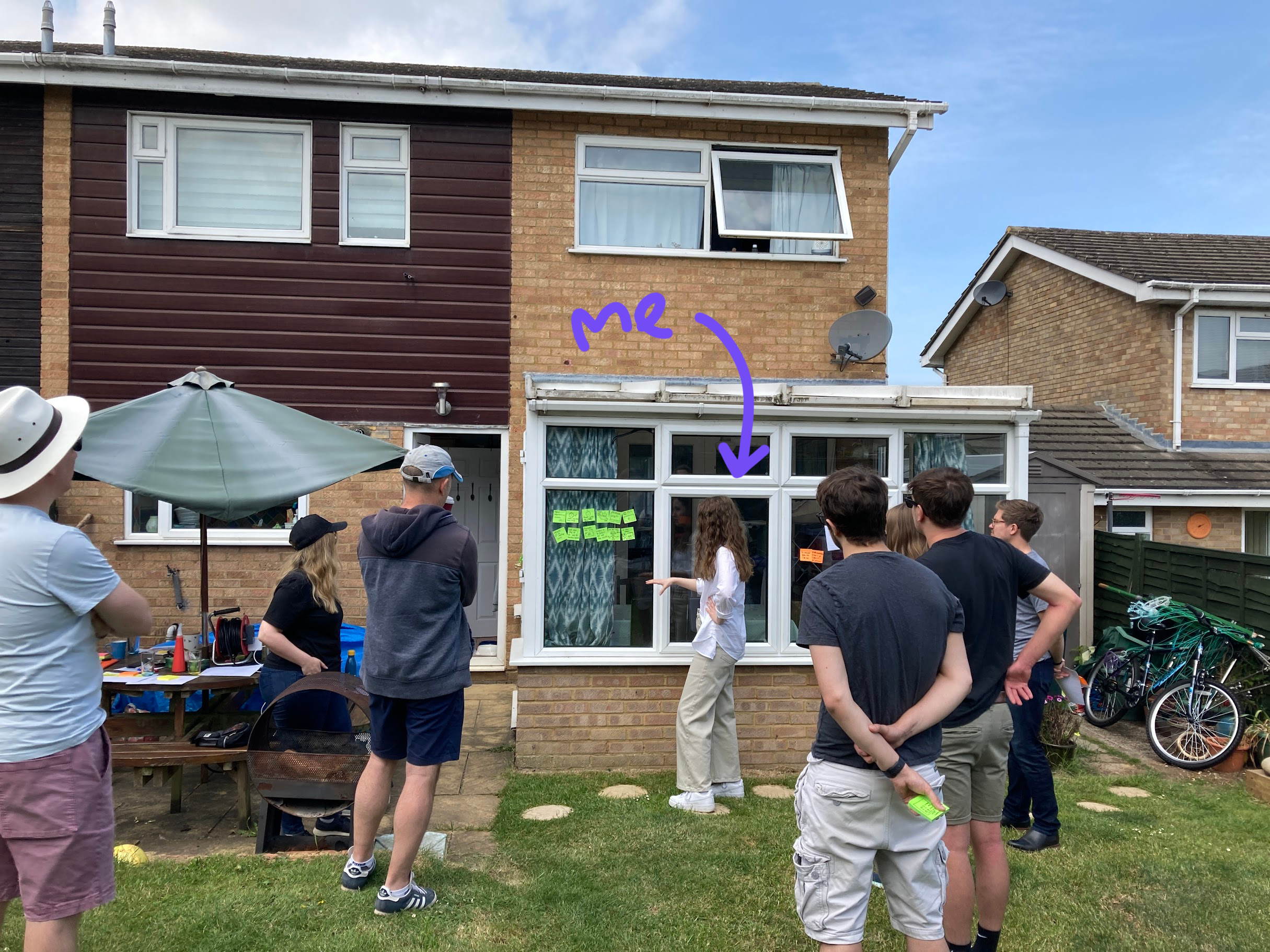Objective
Our goal was to elevate the user experience of IBM RPA by refining its visual design, improving usability and increasing user satisfaction. We wanted to improve the visuals, the installer experience and the overall look and feel of the pages.
Personas and user journeys
With the help of our user research team, we identified a main persona for the project:
Blake, the business manager. Blake works in a growing SME, managing a team of customer service agents. Blake needs to ensure his team is working efficiently, while still providing a high quality customer service.
The scenario
He’s just bought IBM RPA to automate his more basic customer service calls; freeing up the 'human team' to work on more complicated customer calls.

Pain point identification
We conducted a series of interviews with real RPA users and noted their pain points. We noticed that:
- The installer seemed unsafe
- Error messages lacked detail
- Instructions were confusing
- The UI was old and outdated


Workshopping and ideation
We started with a comprehensive sprint to define the design direction for IBM RPA. This phase involved:
- Creating concept-level wireframes
- Engaging in iterative feedback sessions with the RPA Console team
- Presenting lo-fi designs to clients at the North American Summit in Hursley for validation
The iterative feedback and client insights were crucial in shaping the vision for the product's redesign.
I ran a workshop to brainstorm initial concepts for the new IBM RPA product, helping us to explore possible opprotunities for growth and identify solutions to the pain points.


Iteration
The design process involved multiple iterations, beginning with initial wireframes and evolving through regular feedback sessions. Key activities included:
- Developing concept-level wireframes to establish foundational ideas
- Participating in iterative feedback sessions with the RPA SMEs to refine designs
- Presenting lo-fi designs to clients at the North American Summit in Hursley for validation and input
These iterative feedback loops and client insights were essential in refining the vision for the product redesign. Additionally, I conducted a workshop focused on brainstorming initial concepts for the new IBM RPA product. This workshop was instrumental in exploring growth opportunities and identifying solutions to key pain points.


Animation
I created a series of bespoke animations for the RPA product, including a loading screen animation for the installer.
Outcome and Results
Our redesign efforts culminated in significant improvements across multiple aspects of the IBM RPA experience. The enhanced visual design, streamlined installer and refined user interactions led to a more intuitive and engaging user experience. Key outcomes included:
- Modernized Visual Design: The updated UI now features a cleaner, more contemporary look that enhances usability and aligns with current design standards.
- Improved Installer Experience: The installer was redesigned to be more user-friendly and secure, addressing previous concerns about safety and ease of use.
- Enhanced Error Messaging: Error messages were revised to provide clearer, more actionable information, reducing user frustration and support requests.
- Refined Instructions: Instructions were simplified and clarified, making it easier for users to navigate the RPA environment and complete tasks efficiently.
Feedback indicated a marked increase in user satisfaction, with many reporting a smoother and more efficient experience. The improvements have not only addressed the initial pain points but also set a new standard for user experience in IBM RPA.
Overall, this project successfully transformed IBM RPA into a more effective tool for our users, enhancing productivity and customer service capabilities across SMEs.